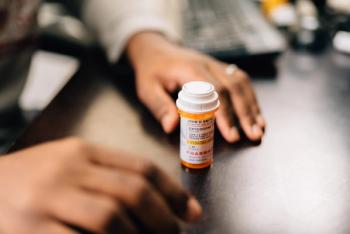
- September 2009
- Volume 75
- Issue 9
Healthy HSP: Antimicrobial Stewardship: The Path of Least Resistance
Mr. Egelund is a PharmD candidate at the University of Florida in Jacksonville. Dr. Schuh is a clinical pharmacist at the Mayo Clinic in Jacksonville, Florida.
Two million. That is the estimated number of individuals who contract an infection each year during a hospital stay. An increasing number of these infections are due to a resistant organism.1 One of the primary contributing factors to the rise in resistance is the fact that numerous patients receive the wrong antibiotics. Some studies suggest that up to 50% of all antibiotic use is inappropriate,2 either due to incorrect dose, inappropriate coverage, excessive duration, drug interactions, or even prescribing an antibiotic to which the patient is allergic.
Pharmacists are in a unique position to help halt the spread of socalled "super infections" based on their knowledge of and familiarity with medications. Many feel it is incumbent upon pharmacists as health care workers to be more involved and stem the tide of unnecessary antibiotic usage-to be proper stewards of these medications. Antimicrobial stewardship is defined by Dale Gerding, MD, as "the optimal selection, dosage, and duration of antimicrobial treatment that results in the best clinical outcome for the treatment or prevention of infection, with minimal toxicity to the patient and minimal impact on subsequent resistance."3
Recently, the Infectious Diseases Society of America (IDSA) and the Society for Healthcare Epidemiology of America (SHEA) cosponsored guidelines for institutions to follow in developing an appropriate antimicrobial stewardship program in hospital settings.4 The guidelines suggest creating an antimicrobial stewardship team led by either an infectious disease physician and/or a pharmacist with infectious disease training. Team members would ideally include a clinical microbiologist, an information system specialist, an infection control professional, and a hospital epidemiologist. Although smaller hospitals may not have the human resources available to include each of these specialists on the team, this should not deter the formation of a team. Even one or 2 individuals with infectious disease training can have a key impact.
Prospective Audit with Intervention and Feedback
Auditing a coworker's antibiotic prescribing and then discussing his or her choices can be daunting, but it has been shown to be one of the most effective ways in controlling resistance and adverse outcomes. It is one of the many obstacles faced by the stewardship team. A second is determining how to form a team for the hospital. Institutions have varying resources, physical capacities, and internal dynamics. Despite this, successful strategies have been implemented in a wide range of institutions as evidenced by the following studies.
In a study conducted in a large 697- bed hospital, residents and interns were randomized to receive no intervention or one-on-one education by an infectious disease specialist on the use of ceftazidime or levofloxacin. The educators stressed microbiologic data, local resistance patterns, and clinical literature. The education resulted in a 37% reduction in the number of days of unnecessary use of the 2 antibiotics.5
In a second study undertaken in a medium-sized facility performed by a clinical pharmacist and an infectious disease (ID) physician on the inappropriate use of third-generation cephalosporins, they managed a 22% decrease of parenteral, broad-spectrum antibiotics. There was also a decrease in both nosocomial Clostridium difficile infections as well as infections caused by enterobacteriaceae.6
Finally, a study in a small 120-bed hospital with limited resources, using only an ID physician and a clinical pharmacist, reviewed patients' antibiotics 3 days per week. They made 488 recommendations, 69% of which were implemented. This resulted in $177,000 estimated annual savings.7 The use of prospective audit with feedback to prescribers not only results in direct cost savings in the reduction of antibiotic use and hospital resources but difficult-to-quantify future savings in treating patients with resistant diseases.
Guidelines
Studies have shown that following evidenced- based practice guidelines, in conjunction with local resistance patterns, can lead to decreased lengths of stay, antimicrobial use, and mortality. Lomas et al suggest that although guidelines may influence physicians' decisions, incentives may be necessary to influence their behavior.8
Streamlining Therapy
Often it is necessary to place a patient on empiric therapy using broad-spectrum antibiotics; once lab results have returned with pathogen susceptibilities, however, it is important to choose a regimen which will effectively cover the targeted organism for the correct treatment time according to practice guidelines. Patients who remain on multiple antibiotics and/or those who are treated for longer than recommended may increase bacterial resistance.9
Antimicrobial Order Forms
Despite additional paperwork, the use of order forms requiring a prescriber to justify his or her decision has been shown to be beneficial in some studies. 10 Caution is advised, however, in using order forms with an automatic stop function, as this could result in unnecessary interruptions in treatment.
Dose Optimization
One manner in which pharmacists currently play a role in stewardship is adjusting the dose of antibiotics such as vancomycin. Prescribers will often write for 1 g to be given every 12 hours. In an elderly patient whose kidney function has declined, this could lead to accumulation and subsequent toxicity. Thankfully, many hospitals will have a pharmacist calculating the creatinine clearance and the expected peak and trough, and adjust the dose accordingly. Aside from renal function and age, additional patient characteristics to consider when dosing are disease state, weight, and site of infection.
Parenteral to Oral Conversion
Having a protocol in place to switch IV medications to their oral counterparts (when tolerated by the patient) can lead to a reduced hospital stay for patients and substantial financial savings to an institution. Examples of some converted medications due to their oral bioavailability are linezolid, azithromycin, fluconazole, pantoprazole, and ciprofloxacin.
Formulary Restriction and Preauthorization
Cost savings can be substantial, but studies have shown mixed results in regards to antimicrobial resistance. Limiting the use of one antibiotic may simply shift to the overuse of another.11 It has proven to be useful in certain outbreaks, but long-term effectiveness is questionable.12
Education
Education for hospital staff is the most frequently employed intervention (eg, presentations, e-mail alerts). Studies indicate they have little impact on preventing bacterial resistance when used as the sole means of combating resistance;4,13 thus, it is necessary to employ additional measures in combination with education.
Antimicrobial Cycling
The rationale behind the cycling of antibiotics is that once a high frequency of resistance occurs with one class, institutions will switch to a second to eradicate the population of resistant microbes. When microbes become resistant (presumably years later) to this second class, the institution switches back to the original. If resistant plasmids have not been completely eliminated from the bacterial population, however, resistance can reemerge quickly.14 A few studies have shown positive results, but often there were concomitant changes made which confounded the results.15 Not enough evidence ccurrently exists to recommend implementing the cycling of antibiotics.
Combination Therapy
Using 2 or more agents with differing mechanisms of action has insufficient data to support its role unless used empirically in critically ill patients with multi-drug-resistant organisms; otherwise, critics believe the coverage is redundant and therefore will only lead to increased resistance. More studies in this area are needed.
Admittedly, the best strategies for the prevention of resistance have not been established. This is due primarily to lack of randomized controlled trials in this area. Multiple interventions have been made simultaneously in many studies, making it difficult to discern which interventions were effective. Additionally, the team may face resistance in implementing such a program. As one trauma surgeon stated when asked during a survey regarding his usage of tigecycline (Tygacil) as initial therapy, "We don't mess around up here [in the critical care unit]." It is attitudes such as this that underscore the need for patience and collaboration on the part of the stewardship team. It is a large undertaking, but the financial savings can be significant, well into 6 figures.5,16,17 More important is the opportunity to slow the progression of antibiotic resistance and reduce the number of lives lost to infections for which pharmacists have no medications to treat.
Articles in this issue
about 16 years ago
Pain Management Watchabout 16 years ago
GERD Watchabout 16 years ago
Diabetes Watchabout 16 years ago
Coagulation Counselingabout 16 years ago
Liability for Dispensing a Withdrawn Drugabout 16 years ago
Health Care Reform: Funding for Specialty Residenciesabout 16 years ago
Prescribed Measures: Identifying and Preventing Prescription Abuseabout 16 years ago
Outlook: Obesity Epidemicabout 16 years ago
A Pharmacist's Guide to OTC Therapy: NSAIDS and Alzheimer's Riskabout 16 years ago
REMS and Opiates- A New Beginning?Newsletter
Stay informed on drug updates, treatment guidelines, and pharmacy practice trends—subscribe to Pharmacy Times for weekly clinical insights.



















































































































































































































